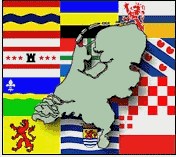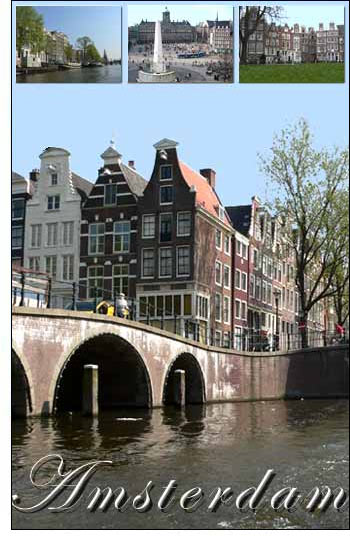 History of Holland
History of HollandHistory of Netherlands
Amsterdam Holland
Netherlands cities
Alkmaar Netherlands
Amsterdam Netherlands<
Map Amsterdam
Old city map of Amsterdam
Arnhem Netherlands
Delft Netherlands
Groningen Netherlands
Haarlem Netherlands
Leiden Netherlands
Maastricht Netherlands
Nijmegen Netherlands
Rotterdam Netherlands
The Hague Netherlands
Utrecht Netherlands
Zwolle Netherlands
Tulips of Holland
Dutch painters
Dutch writers and scientists
Dutch paintings
Famous Dutch people
Dutch history
Dutch folk tales
Rembrandt and the Nightwatch
Holland history
Holland on sea history
Pictures of Holland
Dutch architecture
Holland facts
New Amsterdam history (New York)
Useful information
Amsterdam Netherlands
 |  |
 | |
 | |
In 1368 Amsterdam was a member of the Hanseatic League. One-third of the town was destroyed by a conflagration in 1421, but its prosperity was only temporarily checked. In 1490 the Emperor Maximilian I granted the city the privilege of using the imperial crown as the crest in its armorial bearings. The real importance and prosperity of Amsterdam date from the close of the 16th century, when the Spanish war had ruined Antwerp, and numbers of merchants, manufacturers, and artists were compelled to quit the Spanish Netherlands.
Between 1585 and 1595 the town was nearly doubled in extent, and was greatly favoured by Prince Maurice of Orange. The establishment of the Dutch East India Company (1602) and the conclusion of peace (1609) combined to raise Amsterdam within a very short period to the rank of the greatest mercantile city in Europe. The number of inhabitants in 1622 is believed to have been 105,000. External circumstances, such as the attempt of William II of Orange to occupy the city with his troops (1650), and the danger threatened by the campaign of Louis XIV (1672), did not seriously affect the prosperity of the inhabitants.
The 18th century brought no increase of prosperity, and towards the end of it the Netherlands paid with the loss of a great part of their fleet for siding against Great Britain in the American war of independence. The annexation of Holland by France in 1795 and Napoleon's continental blockade (1806-13) completely annihilated the trade of Amsterdam, though even at that time the population was 217,000.
The construction of the North Holland Canal, which was intended to supersede the unfavourable approach through the Zuiderzee, did not have the desired result. There was no permanent revival of trade until the completion of the North Sea Canal placed Amsterdam in the ranks of seaports. And this position was strengthened in 1892 by the Merwede Canal, which, running via Utrecht to the Lek and the Merwede, placed Amsterdam in direct connection with the Rhine.

